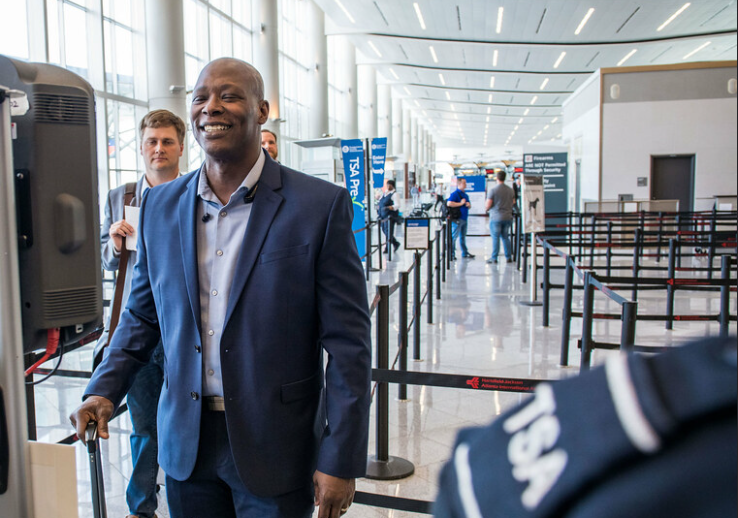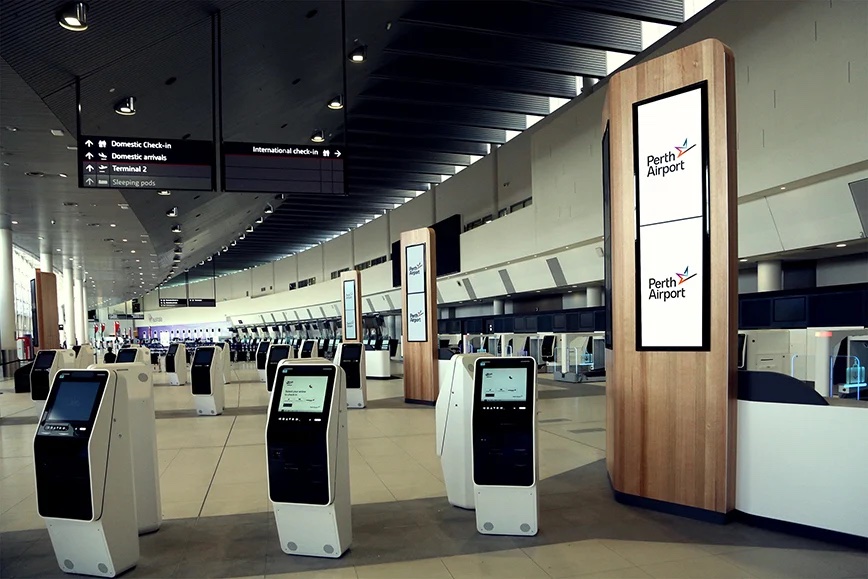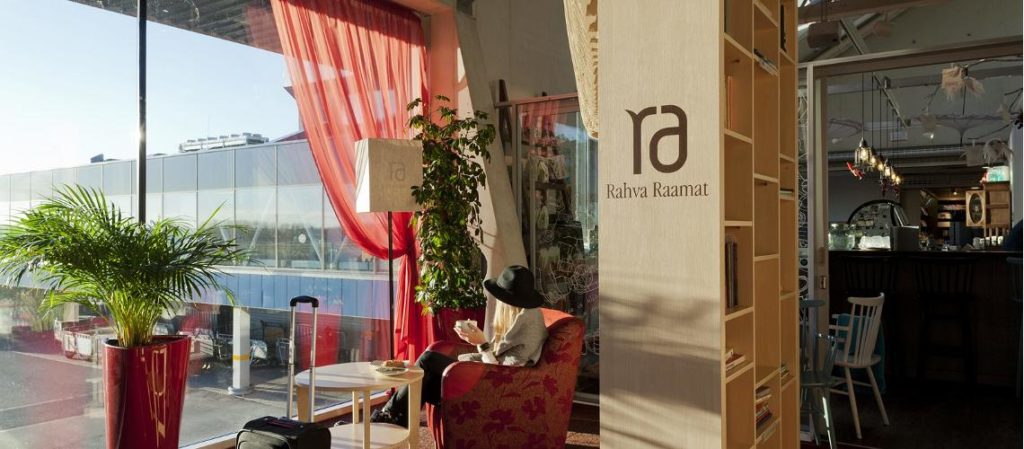Touchless travel and why airports need to think like museum curators
Share
Touchless travel is a trend that’s been accelerated by the COVID-19 pandemic. Over the past two and a half years, health and safety concerns have driven the move towards greater automation, where physical interaction with staff is increasingly taken out of the equation.
Mobile boarding passes have been with us for a while, and added to that contactless food ordering at airports, automated bag drops and online shopping at duty free stores are increasingly common.
However the latest and possibly most far reaching trend is a passenger’s face becoming their boarding pass through biometric scans. This in turn has a big impact on the overall passenger experience, which we’ll look at in this article.
Biometric technology introduced at airports

A number of airports and airlines have introduced biometric scans, where passengers can pre-register and go through security and board their flight.
In 2021, Delta introduced a digital identity experience, in an exclusive partnership with TSA PreCheck.
The system was first of all tried in Detroit before being rolled out to Atlanta. With just one look at a camera, customers who qualify and opt in can easily and efficiently check a bag, pass through the TSA PreCheck security line and board their plane.
Air Asia’s FACES is available on the airasia Super App, identifying guests via an instant facial recognition technology. FACES scans, identifies and assists in managing the flight journey where guests can order, book directly on the super app. The facial recognition technology can also be used to board flights at KLIA, as this video shows.

Most recently, Perth Airport in Australia announced a facial recognition trial.
During the height of the pandemic it introduced touchless car park check-ins, self check-in kiosks, automated bag drops, online duty free shopping and the ability to order and collect food via QR codes.
Perth Airport has now gone one step further, rolling out a touchless biometric system that works from check-in, until the time the passenger boards.
With the biometric technology being delivered by Amadeus, the system is currently being trialed on Singapore Airlines flights prior to a wider roll-out.
According to Perth Airport CEO Kevin Brown, “The recently installed self-check-in kiosks and bag drop units enable passengers to check-in and facilitate bag drop independently without the intervention of airline staff – therefore improving passenger flow while reducing processing time and queuing.
“The new facial recognition technology builds on this concept. This process eliminates the need for a physical boarding pass and the passport checks at both the Auto Bag Drop and boarding gate and will reduce the possibility of delays which are sometimes encountered due to manual document checks.”
With airports worldwide having experienced bottlenecks once COVID travel restrictions started falling, the concept of cutting down waiting times with new technology is a positive one.
Airports need to think like museum curators
But what does this mean for how airports and airlines interact with passengers during the all-important dwell time?
This is something that SimpliFlying CEO Shashank Nigam talked about as long ago as 2018. When speaking at the ACI Summit, he warned of the rise of the ‘silent traveler’, someone who will go from the airport entrance to his or her seat on board a flight with minimal or even no human interaction.
Shashank Nigam’s advice was that airports would need to be “remarkable or invisible.”
He urged airports to think like “museum curators”, where the airports themselves become destinations encouraging passengers to spend time there and interact with the different amenities and experiences.
Singapore’s Changi Airport is of course one of the best examples of that, with its ‘Jewel’ entertainment and retail complex.
And of course, Singapore is not standing still with its plans for the new Terminal Five. According to designer Thomas Heatherwick who spoke to CNN:
“Our intention is to redefine what an airport terminal can be. Most airports aren’t great places to spend time but Changi has always been different. Rather than making a single vast monolith on the outskirts of a city for the exclusive use of travelers, our plan is to create a social space that people living in the city are excited to visit.”
Of course Singapore’s Changi Airport is one of the world’s biggest, but there are examples of smaller airports excelling in providing a good passenger experience.

Estonia’s Tallinn Airport regularly ranks as one of the best in Europe. Its stated mission is to be “the coziest airport”, and when passing through it, you are struck that many waiting areas have almost a living room feel about them.
Though it doesn’t have a swimming pool, like Changi, it does have what it claims to be Europe’s first airport pop-up gym, along with chess and table tennis areas.
This loss of the human dimension brings challenges. But it also brings opportunities in terms of improving the passenger experience, customer service, convenience and finally in opportunities to upsell products and services.
And providing a richer, more interactive and varied experience ultimately pays dividends, with an extra star rating on Tripadvisor typically producing a 5-9% uplift in revenue, and a 1% airport service quality rating resulting in a 1.5% increase in revenue.


